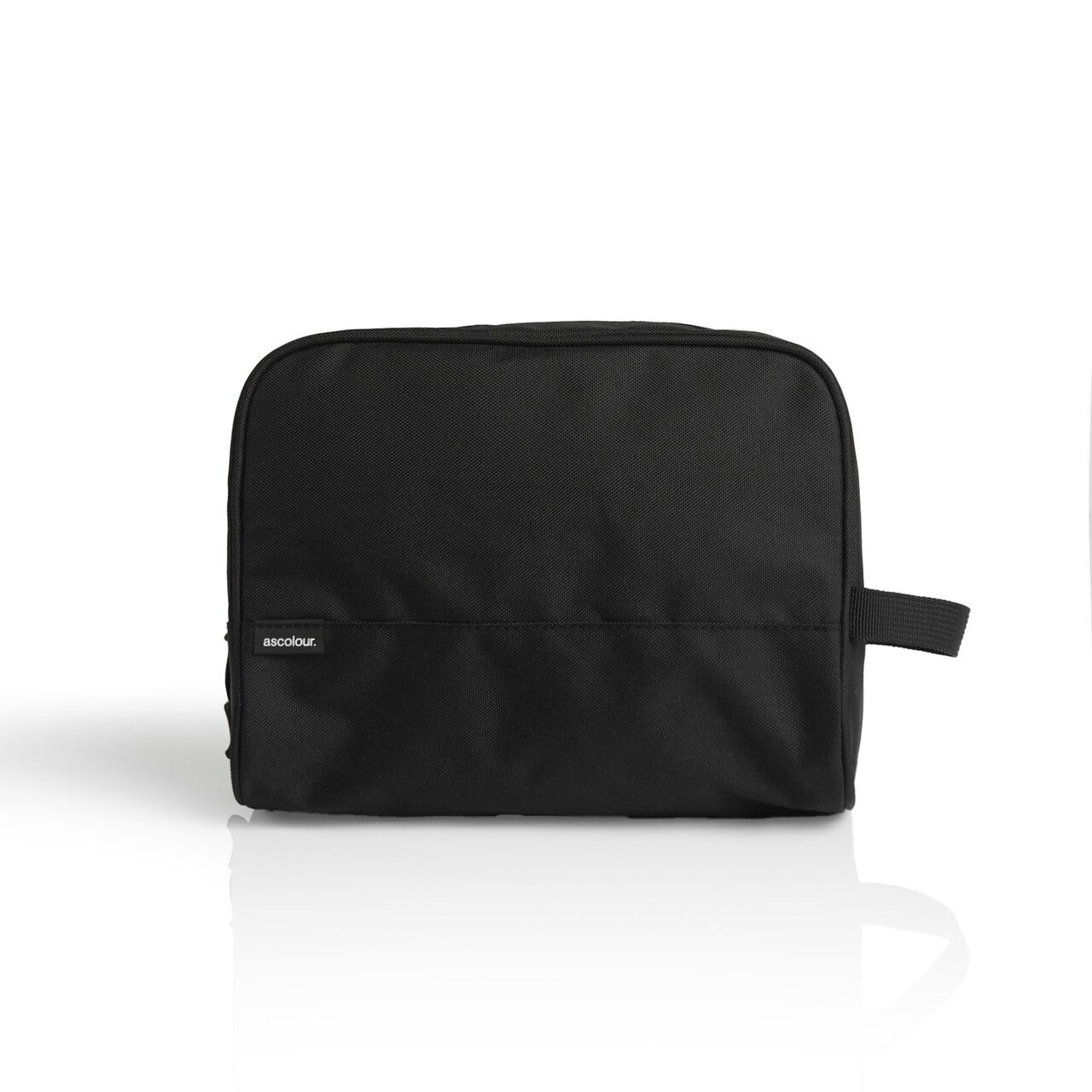Description
100% recycled polyester
Heavy weight 210 GSM
Large main compartment with ykk zip to close, internal metal mesh pockets on each side, handle on one end
One size L 24cm x W 16cm x H 10cm, 4 litre capacity
Tear-out AS Colour label
Saving approx. 4.2 500ml plastic bottles from landfill.
Additional information
| Colour | Black |
|---|---|
| Decoration | Small Embroidery up to 5K stitches, Medium Embroidery up to 10k stitches, Large Embroidery up to 15K stitches and 18cm, Extra Large Embroidery 20k stitches over 18cm, A5 Full colour digital Transfer (SuperColour), A4 Full colour digital Transfer (SuperColour), 1 Colour ScreenPrint, 2 Colour ScreenPrint, 3 Colour ScreenPrint, 4 Colour ScreenPrint, None |
| Decoration 2 | None, Small Embroidery up to 5K stitches, Medium Embroidery up to 10k stitches, Large Embroidery up to 15K stitches and 18cm, Extra Large Embroidery 20k stitches over 18cm, A5 Full colour digital Transfer (SuperColour), A4 Full colour digital Transfer (SuperColour), 1 Colour ScreenPrint, 2 Colour ScreenPrint, 3 Colour ScreenPrint, 4 Colour ScreenPrint |
| Decoration 3 | None, Small Embroidery up to 5K stitches, Medium Embroidery up to 10k stitches, Large Embroidery up to 15K stitches and 18cm, A5 Full colour digital Transfer (SuperColour), A4 Full colour digital Transfer (SuperColour), 1 Colour ScreenPrint, 2 Colour ScreenPrint, 3 Colour ScreenPrint, 4 Colour ScreenPrint |
| Optional | None, Poly Bagging, Embroidered names up to 2k stitches, Names up to 12cm wide Powerprint |
| Material | 100% recycled Polyester |
| Production Time | 2 Weeks Production Time |
Our guarantee
All of our products are fully guaranteed to work, look and feel as designed.
Our most highly regarded company value at Good Things is integrity. We do what we say we are going to do in a timely fashion. We get "Back in a Flash" to all our clients for quotes, artwork and samples.
It is essential in our industry - from meeting delivery deadlines, through to having a product match a sample when delivered to each minute detail.
When dealing with us you can expect to get exactly what you ordered: as agreed, and on time. That is the Good Things Guarantee.
Product reviews
Recycled Toiletry Bag
99.4% jobs
delivered on-time
Free graphic
design
Quotes within
24 hours
Get an instant quote
Description
100% recycled polyester
Heavy weight 210 GSM
Large main compartment with ykk zip to close, internal metal mesh pockets on each side, handle on one end
One size L 24cm x W 16cm x H 10cm, 4 litre capacity
Tear-out AS Colour label
Saving approx. 4.2 500ml plastic bottles from landfill.
Additional information
| Colour | Black |
|---|---|
| Decoration | Small Embroidery up to 5K stitches, Medium Embroidery up to 10k stitches, Large Embroidery up to 15K stitches and 18cm, Extra Large Embroidery 20k stitches over 18cm, A5 Full colour digital Transfer (SuperColour), A4 Full colour digital Transfer (SuperColour), 1 Colour ScreenPrint, 2 Colour ScreenPrint, 3 Colour ScreenPrint, 4 Colour ScreenPrint, None |
| Decoration 2 | None, Small Embroidery up to 5K stitches, Medium Embroidery up to 10k stitches, Large Embroidery up to 15K stitches and 18cm, Extra Large Embroidery 20k stitches over 18cm, A5 Full colour digital Transfer (SuperColour), A4 Full colour digital Transfer (SuperColour), 1 Colour ScreenPrint, 2 Colour ScreenPrint, 3 Colour ScreenPrint, 4 Colour ScreenPrint |
| Decoration 3 | None, Small Embroidery up to 5K stitches, Medium Embroidery up to 10k stitches, Large Embroidery up to 15K stitches and 18cm, A5 Full colour digital Transfer (SuperColour), A4 Full colour digital Transfer (SuperColour), 1 Colour ScreenPrint, 2 Colour ScreenPrint, 3 Colour ScreenPrint, 4 Colour ScreenPrint |
| Optional | None, Poly Bagging, Embroidered names up to 2k stitches, Names up to 12cm wide Powerprint |
| Material | 100% recycled Polyester |
| Production Time | 2 Weeks Production Time |
Our guarantee
All of our products are fully guaranteed to work, look and feel as designed.
Our most highly regarded company value at Good Things is integrity. We do what we say we are going to do in a timely fashion. We get "Back in a Flash" to all our clients for quotes, artwork and samples.
It is essential in our industry - from meeting delivery deadlines, through to having a product match a sample when delivered to each minute detail.
When dealing with us you can expect to get exactly what you ordered: as agreed, and on time. That is the Good Things Guarantee.

